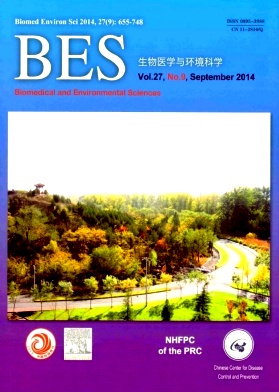Establishment of Multiple Locus Variable-number Tandem Repeat Analysis Assay for Genotyping of Borrelia burgdorferi sensu lato Detected in China
doi: 10.3967/bes2014.102
-
Key words:
- Borrelia burgdorferi sensu lato /
- MLVA /
- VNTR /
- MLSA /
- Genotyping
Abstract: Objective Human Lyme Borreliosis (LB), which is caused by Borrelia burgdorferi sensu lato (B. burgdorferi), has been identified as a major arthropod-borne infectious disease in China. We aimed to develop a multiple locus variable-number tandem repeat (VNTR) analysis (MLVA) assay for the genotyping of Borrelia burgdorferi strains detected in China. Methods B. garinii PBi complete 904.246 kb chromosome and two plasmids (cp26 and lp54) were screened by using Tandem Repeats Finder program for getting potential VNTR loci, the potential VNTR loci were analyzed and identified with PCR and the VNTR loci data were analyzed and MLVA clustering tree were constrcted by using the categorical coefficient and the unweighted pair-group method with arithmetic means (UPGMA). Results We identified 5 new VNTR loci through analyzing 47 potential VNTR loci. We used the MLVA protocol to analyse 101 B. burgdorferi strains detected in China and finally identified 51 unique genotypes in 4 major clusters including B. burgdorferi sensu stricto (B.b.s.s), B. garinii, B. afzelii, and B. valaisiana, consistent with the current MLSA phylogeny studies. The allele numbers of VNTR-1, VNTR-2, VNTR-3, VNTR-4, and VNTR-5 were 7, 3, 9, 7, and 6. The Hunter-Gaston index (HGI) of five VNTR loci were 0.79, 0.22, 0.77, 0.71, and 0.67, respectively. The combined HGI of five VNTR loci was 0.96. Clustering of the strains of Xinjiang, Inner Mongolia and Heilongjiang was confirmed, and this situation was consistent with the close geographical distribution of those provinces. Conclusion The MLVA protocol esytablished in this study is easy and can show strains’ phylogenetic relationships to distinguish the strains of Borrelia species. It is useful for further phylogenetic and epidemiological analyses of Borrelia strains.
| Citation: | ZHOU Xin, HOU Xue Xia, GENG Zhen, ZHAO Rui, WAN Kang Lin, HAO Qin. Establishment of Multiple Locus Variable-number Tandem Repeat Analysis Assay for Genotyping of Borrelia burgdorferi sensu lato Detected in China[J]. Biomedical and Environmental Sciences, 2014, 27(9): 665-675. doi: 10.3967/bes2014.102 |







 Quick Links
Quick Links
 DownLoad:
DownLoad: